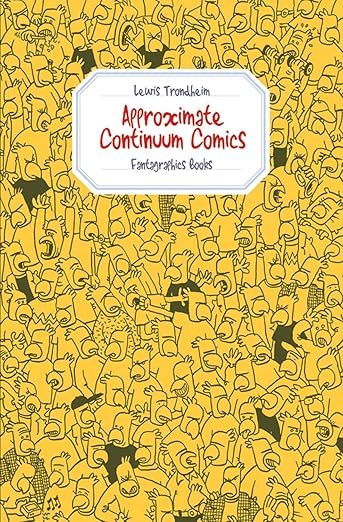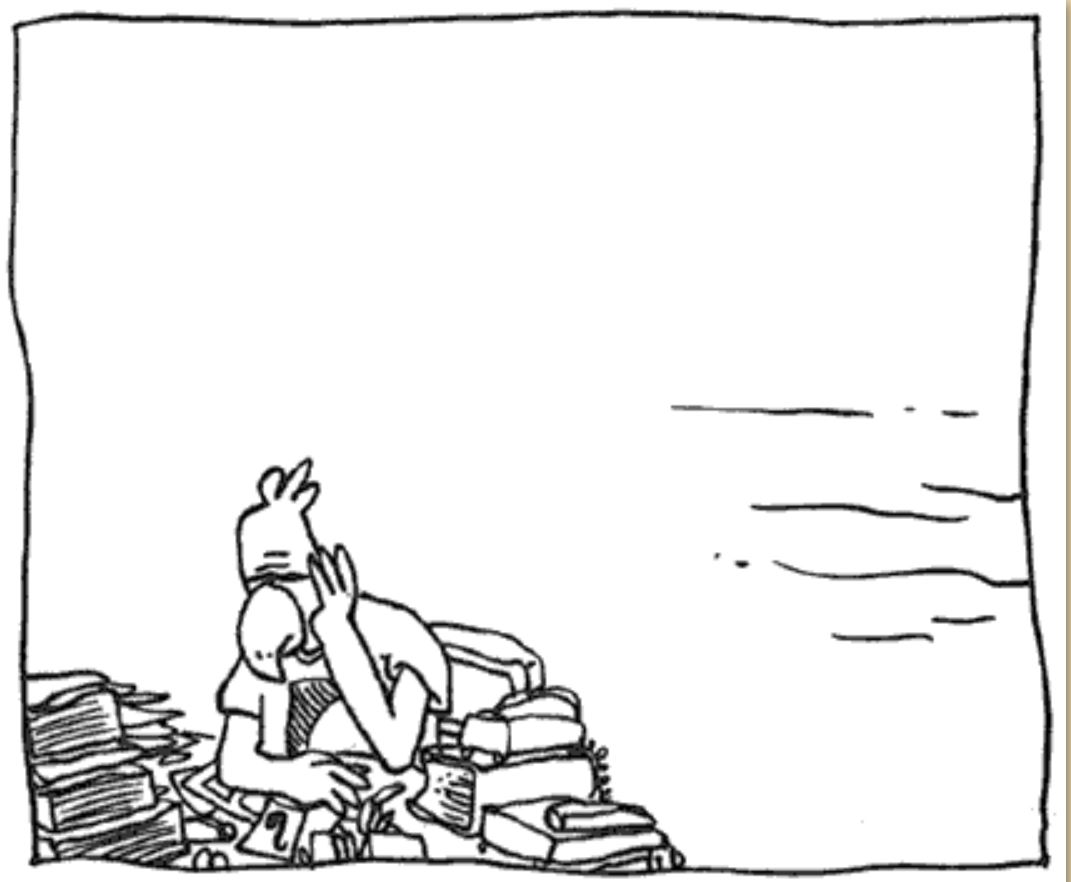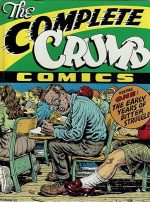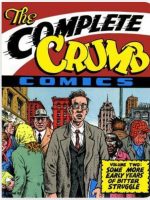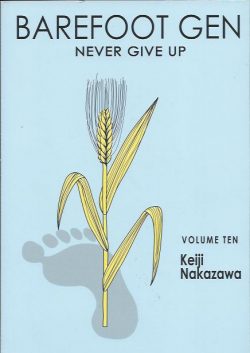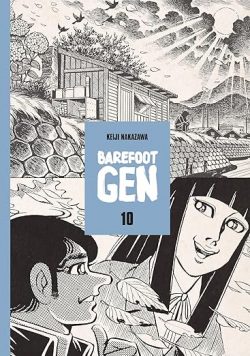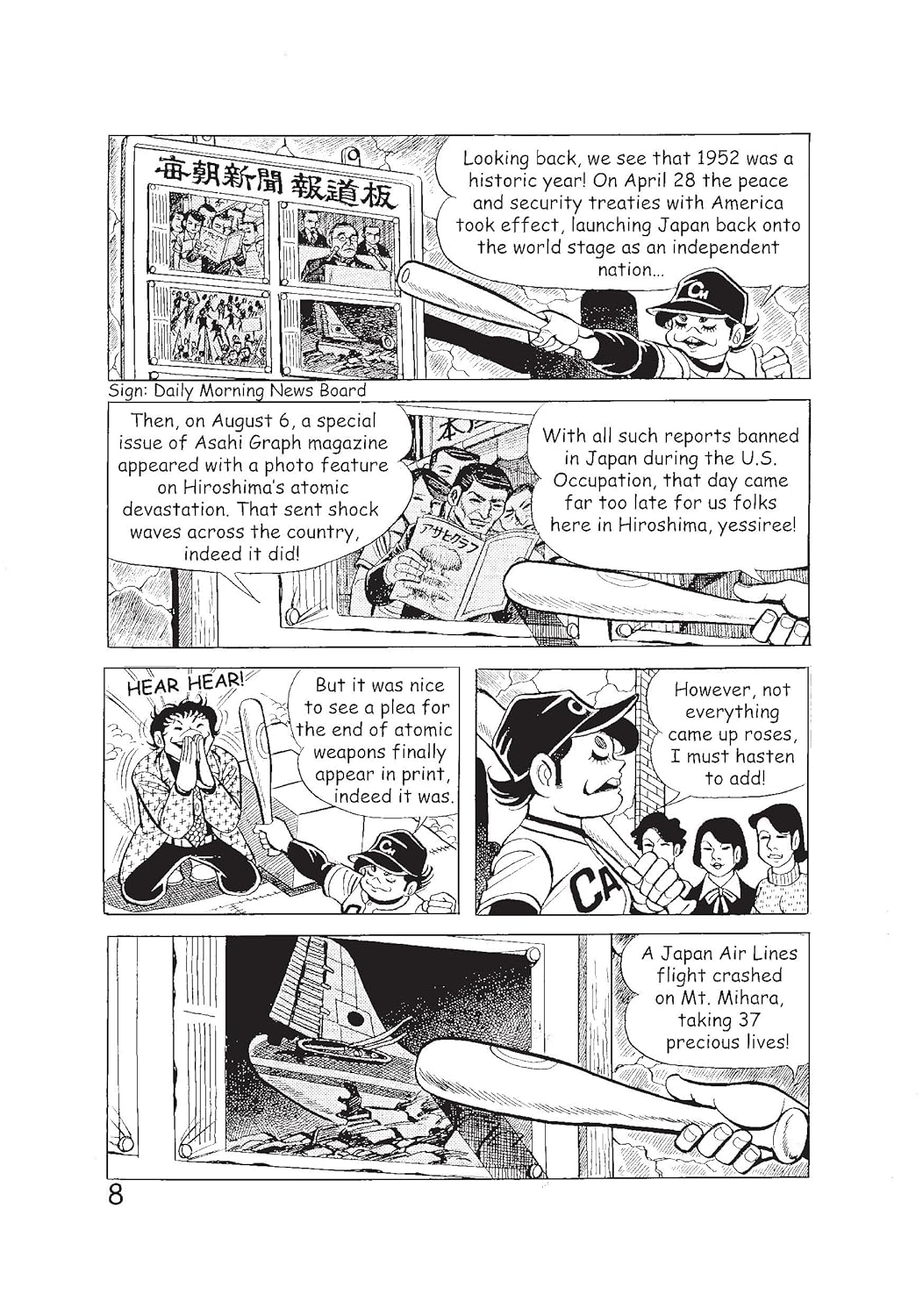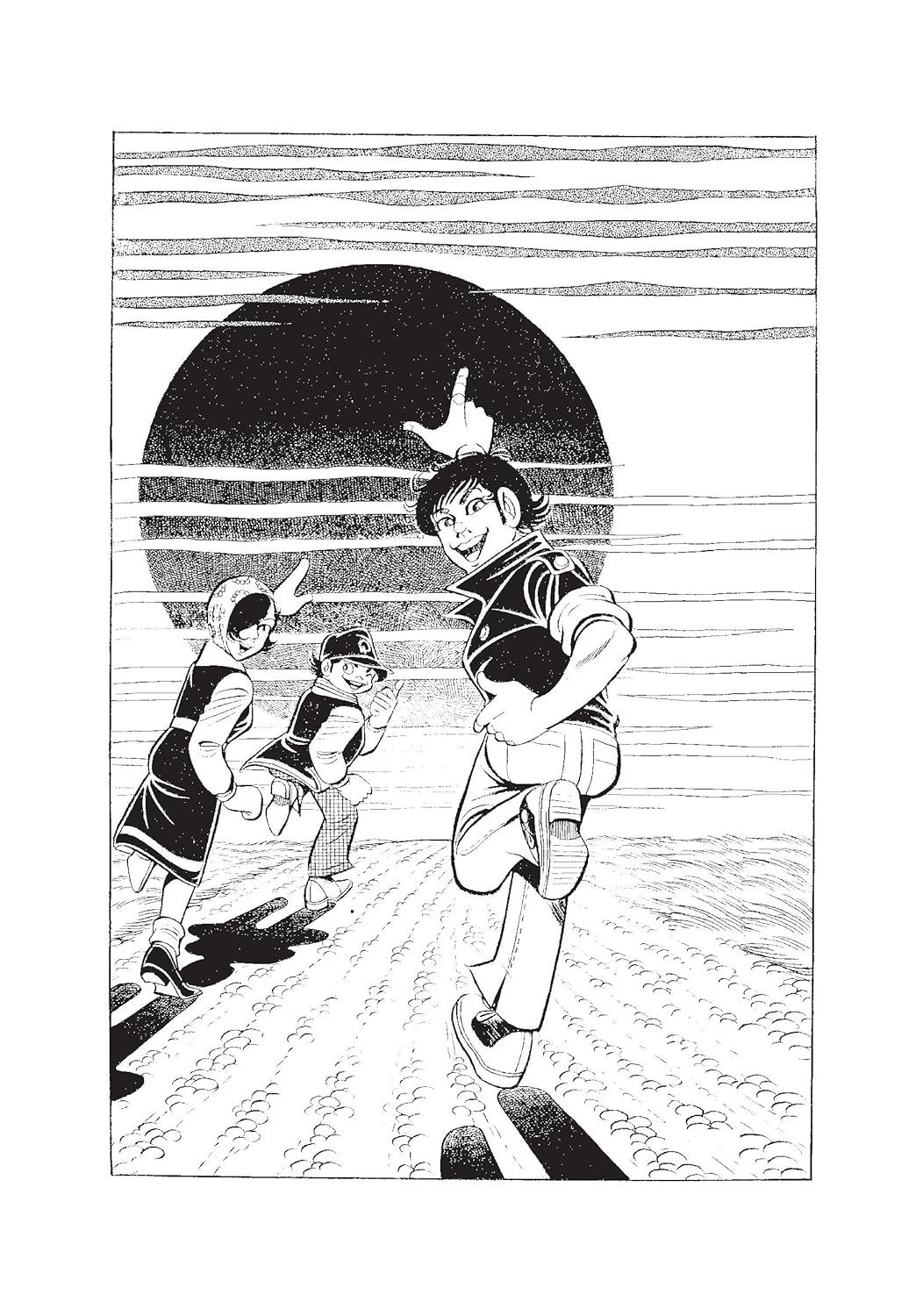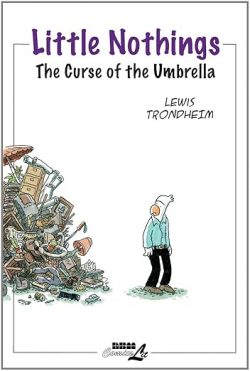
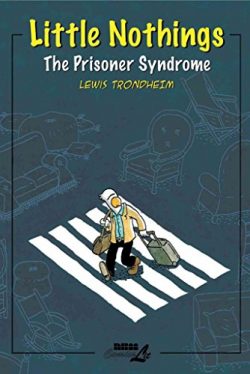
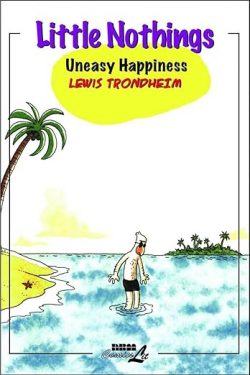
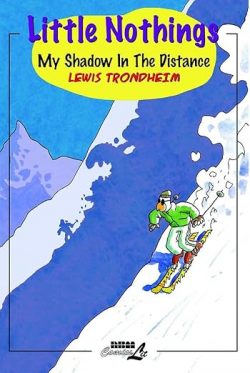
By Lewis Trondheim, translated by Joe Johnson (NBM/ComicsLit)
ISBN: vol. 1: 978-1-56163-523-8 (Album PB), vol. 2: 978-1-56163-548-1 (Album PB),
vol. 3: 978-1-56163-576-4(Album PB), 978-1-56163-523-8 (Album PB),
I first became aware of Lewis Trondheim’s subtly enchanting vignettes in Fantagraphics’ Mome comics anthologies rather than through its internet presence and it’s a constant and utter delight for this old duffer (me, not him) to see this blend of cartoon philosophy, personal introspection, whimsical inquiry and foible-filled observations gathered into such handy tomes for constant re-reading. With over 100 books sporting his name (which isn’t actually Lewis Trondheim but Laurent Chabosy), the writer/artist/editor/educator is one of Europe’s most prolific comics creators: illustrating his own work, overseeing animated cartoons of such print successes as La Mouche (The Fly) and Kaput and Zösky or editing younger readers books (Dargaud’s series Shampooing).
His most famous works are global hits Les Formidables Aventures de Lapinot (translated as The Spiffy Adventures of McConey), Infinity 8, Ralph Azam and, with Joann Sfar, epic nested fantasy series Donjon as seen anglicised as Dungeon, Dungeon: Parade, Dungeon: Monstres, Dungeon: the Early Years et al. In his spare time he has written for satirical magazine Psikopat and provided scripts for the continent’s most popular artists, such as Fabrice Parme, Manu Larcenet, José Parrondo and Thierry Robin. Trondheim is, of course, a cartoonist of uncanny wit: piercing, gentle perspicacity, comforting affability and self-deprecating empathy, and prefers to control scrupulously what is known and said about him…
Some while ago the well-travelled graphic introvert began drawing a deliciously intimate cartoon blog wherein all the people Trondheim knows are rendered as anthropomorphised animals (with him a dowdy, parrot-beaked actor/director) which has been edited into a series of enchanting full-colour albums. Page after page of introspective, whimsical, querulous and enticingly intriguing reportage has emerged since.
Volume 1 – The Curse of the Umbrella – features ruminations on gardening and possessing a vegetable death-touch; introduces his family; examines a love-hate relationship with technology and computer games, also covering the dramas of becoming first time cat-owners at an advanced (human) age. Similarly scrutinised are hypochondria and the internet’s impact as an enabler of such recurs, as also work-processes for the self-employed, snacks, keeping fit, memory, death, bird-poop, the weather and travel to comics events in exotic locations such as the Reunion Islands and Edinburgh.
The daily bulletins explore little events and really big themes and there are also purely visual moments that you just have to see to appreciate and get…
In second volume The Prisoner Syndrome, the cascade of cartoon delights continues with more of the same whilst adding summer beach madness, floating with the fishes, exploring volcanoes, ecology and hotel wastefulness, comic convention memory (so different from the regular kind). There’s animal antics, travel, energy-saving, visiting Africa, Guadeloupe, Romania and London, the differences between men and women, global political crises and the heartbreaking helplessness and inevitable consequences of seeing your pet die.
Third stanza Uneasy Happiness sees our absurdly bird-faced gentleman amicably nit-picking and further musing his way through the life of an old and successful comic creator: travelling to conventions, making stories and dealing with the distressingly peculiar modern world, especially focusing on his increasing hoarding proclivities, concerns over his creative and financial legacy, mice in the bookshelves and packing…
The ruminations and anti-dramas regularly range from his inability to de-clutter (every comic maven’s weakness!), toilet etiquette (public and private), gadgets, marriage, parenthood, the actual science in TV shows, how mad are cats, brilliant ideas that come when you’re asleep, computers (again and still!), and getting old, all interspersed with reactions to the many wonderful places he has visited on the comics convention circuit (Venice, Portugal, Fiji, Australia and others in this volume alone).
My Shadow in the Distance was the fourth Little Nothings accumulation of deliciously rendered watercolour epigrams…
This collection focuses heavily on Trondheim’s global peregrinations – with and without his family – to such far-flung places as Iceland, America (for an extended and hilariously unsettling family vacation spanning New York to Las Vegas), Quebec & Canada, Germany, Prague, Madrid, Italy, Corsica, Argentina, Ushuaia, Antarctica and Africa, with all attendant joys and night-terrors such voyages engender for him.
As ever, the auteur highlights the ways in which humans vary whilst remaining intrinsically similar – although only my own German forebears could possibly have devised such a brilliant method of enhancing and yet sanitising men’s urinal experiences…
Trondheim also finds time and space to ponder the inevitable decline in quality of movie sequels; roaming credit-card charges; his health, travel etiquette and preparation; the pitfalls of snacking; airports everywhere; the urge to eavesdrop; varying quality of hotels; weather & climate; forgetfulness; comics conventions; fans & professionals; personal space & getting old; skiing holidays; making your own music and what cats are good for before concluding with an extended if rather grotesque episode covering nasal polyp surgery and his inevitable overreaction to it…
All genteelly re-coloured for book publication, Little Nothings is easily one of the most comforting, compelling biographical comics series ever created: gently contemplative, subtly pleasing and ineffably something no fan of any advanced or significant vintage would care to miss. I once more strongly suggest that if you need a little non-theological, un-theosophical yet hilariously existential spiritual refreshment you take advantage of these visual bon mots toot da sweet and with the utmost alacrity…
© 2009-2010 Trondheim. English translation © 2010, 2011 NBM. All Rights Reserved.
Today in 1934, Batman, Phantom and Aquaman artist Don Newton was born. In 1977 landmark UK comic Action was controversially cancelled. In 2003 US artist John Tartaglione died. He was a solid journeyman best know now for his inking during the 1960s and 1970s but he was good at his job and should be lauded for it. Go Google or scroll about on this blog for more.

